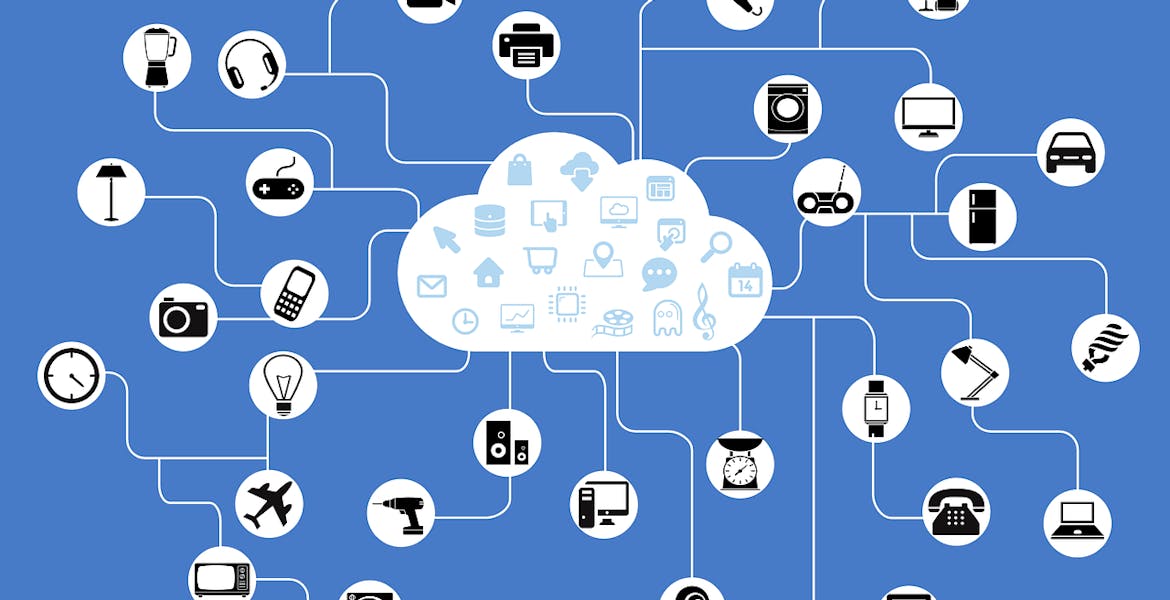The Industrial Internet of Things (IIoT) is a collection of automated machines, advanced analytics and skilled people at work. It is a new innovation built on the connectivity of many devices to the internet powered by the latest communication technologies. This results in systems that can collect data for real time feedback across a large area such as a factory floor or within a city or even a country. These insights can then help to drive better business decisions or create new value for the consumers.
The Industrial Internet of Things (IIoT) is a collection of automated machines, advanced analytics and skilled people at work. It is a new innovation built on the connectivity of many devices to the internet powered by the latest communication technologies. This results in systems that can collect data for real time feedback across a large area such as a factory floor or within a city or even a country. These insights can then help to drive better business decisions or create new value for the consumers.
Industry 4.0 ushers in a new era of industrial capabilities due to the merging of cyber-physical systems. Industrial Internet of Things (IIoT) is part of this new wave of innovation by distributing data collection devices across a workspace from a factory floor to a whole city. At the base is the small electronic sensors and microcontrollers with mobile internet 4G/5G connectivity. Data is transmitted over the internet to the cloud where data pipelines ingest and store the data for future analysis and machine learning.
Effective digital transformations are business-backed and business-led. Digital transformation is about envisioning how technologies like IIoT can redefine value creations by accelerating and scaling existing operations, rethinking how customers are served, and even by reinventing business models. It’s a complete reimagining of the way work is done. Above all, it is about a new way of competing. (Mckinsey)
By combining machine-to-machine communication with industrial big data analytics, IIoT is driving unprecedented levels of efficiency, productivity, and performance. And as a result, industrial companies in original equipment manufacturing, chemicals, food and beverage, automotive, steel, and many other industries are experiencing transformative operational and financial benefits.
~ GE Digital
Industry Ideas
The following are some ideas of how these industry verticals could benefit from the implementation of IIoT
- Production – IIot enabled machines can self monitor, alert and fix any issues that it encounters. These machine can also work synchronously with other machines on the shop floor to maximise production output.
- Supply chain – Sensor managed inventory to ensure adequate stock levels and automatic ordering when levels drop.
- Building management – IIoT can be used to manage a building's energy consumption. By monitoring building parameters such as energy usage, solar generation, room comfort, building services can be adjusted in real-time to achieve optimal results. Solar panels can also be monitored remotely to ensure uptime.
- Healthcare – IIoT machines can monitor patients vital signs all throughout the hospital and provide alerts when emergencies occur. Abnormal patterns can also be spotted and diagnosed via AI algorithms
- Retail – IIoT technology has the potential to make quick, intelligent marketing decisions for individual stores. With storefronts that automatically update based on consumer interest and the ability to put together smart promotions, retail outlets that implement IIoT technology could gain a significant advantage over their competitors.
- Regulatory – IIoT technology has a potential to enhance regulatory mechanisms such as monitoring water quality in a river. Personnel are unable to simultaneously monitor an entire stretch of river to prevent illegal dumping. But sensors can be used to monitor at various points to provide real-time information for compliance.
IIoT Trends and Examples
- Electronic logging device (ELD) – Devices that are placed in cars to monitor a driver's braking, acceleration and other factors. Insurance companies such as AXA use this data to provide discounts on auto insurance for safe drivers, thus promoting safe driving habits. This is known as Telematic Motor Insurance.
- Intelligent Edge – Deep learning networks can be propagated to edge devices such as small Raspberry Pis which can be used to make inference based on data already collected at the source. A good example of this is autonomous cars. Data is collected by the cars and transmitted to the cloud where it is used to refine the model. The model is sent back to the car to be used for inference so the autonomous driving calculations are performed on on-board processors.
- Predictive maintenance – A common use case is to monitor rotating machinery such as pumps. Data is collected such as vibration data and stored into a database. The data is used to predict when a machine is about to fail based on certain patterns within the data.
- Radio-frequency identification (RFID) / QR CODE - Used in a variety of warehouse environments to track movement or status of items by providing an easily scanned tag. This replaces traditional pen and paper in the tracking process for a fully digitised workflow.
Where do I start?
BerjutaTech was founded by engineers with a passion for building highly connected industrial solutions. We have the capability to build the low level microcontroller systems, create a data pipeline to the cloud, store and ingest large amounts of data, and mine that data to generate insights. This is a job highly suited for our Google Cloud Certified Professional Data Engineers who are experienced in building solutions for various industries.
Get in touch with us now and we would love to provide free consultation for your business use case.

